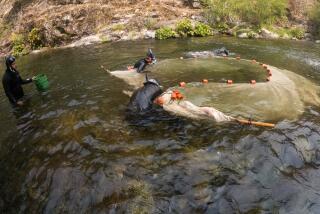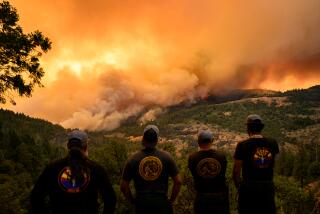Coho Salmon Decline
- Share via
You incorrectly absolve overfishing as a major cause of salmon decline in the Pacific Northwest. In “Federal Agency Seeks Protection for Coho Salmon” (July 20) your writers assert that hydropower generation, timber and agricultural operations “are widely considered the major causes of the fishes’ decline.” A July 24 editorial, “A Leap for the Coho,” speaks only of “logging operations [that] cause erosion that kills fish eggs.”
A simple check of history provides a different story. In a recent review of management and environmental factors responsible for the decline of Oregon’s wild salmon, fishery biologists V. W. Kaczynski and J.F. Palmisano clearly state that commercial harvest of Pacific Coast salmon began to decline 70 or more years ago as a result of overfishing, before dam construction or forestry began as serious ventures.
We aren’t saying forest harvesting practices of the past played no role in stream siltation and the degradation of salmon habitat. But forestry practices of today have changed and now afford greater protection to streams and fish. The point is that forestry is neither the only nor the major problem affecting the current status of salmon. Because the problem is very complex, we must avoid the simple solution.
W. HENSON MOORE
President and CEO
American Forest and Paper Assn.
Washington
More to Read
Sign up for The Wild
We’ll help you find the best places to hike, bike and run, as well as the perfect silent spots for meditation and yoga.
You may occasionally receive promotional content from the Los Angeles Times.






